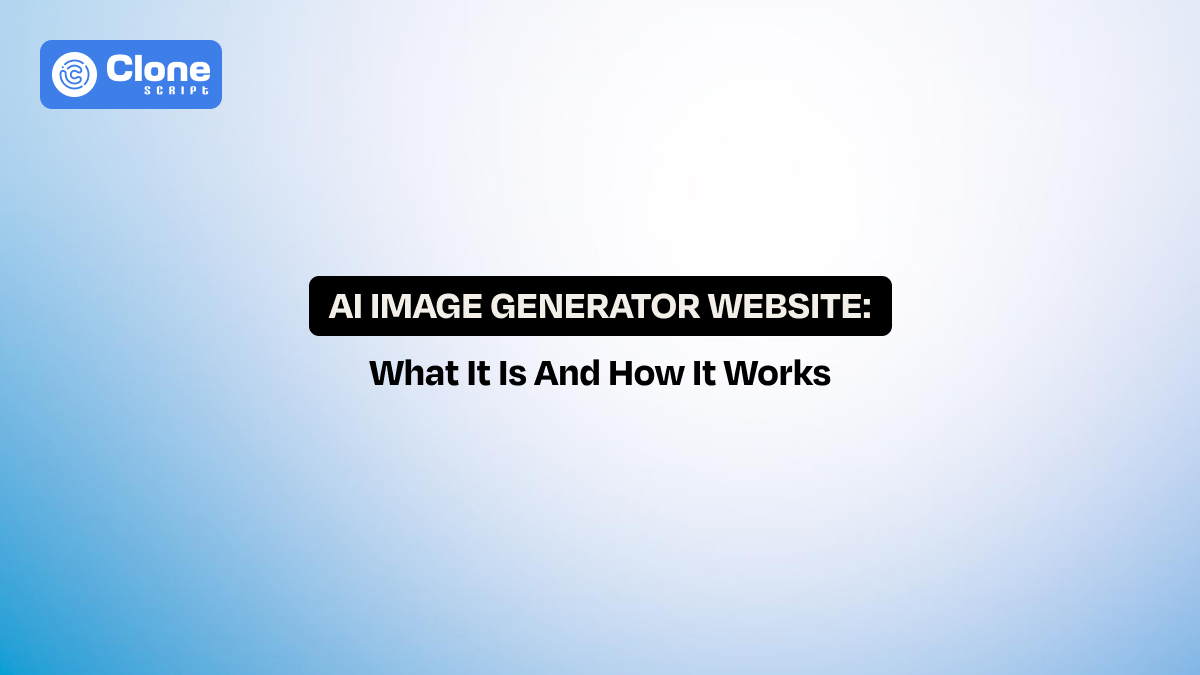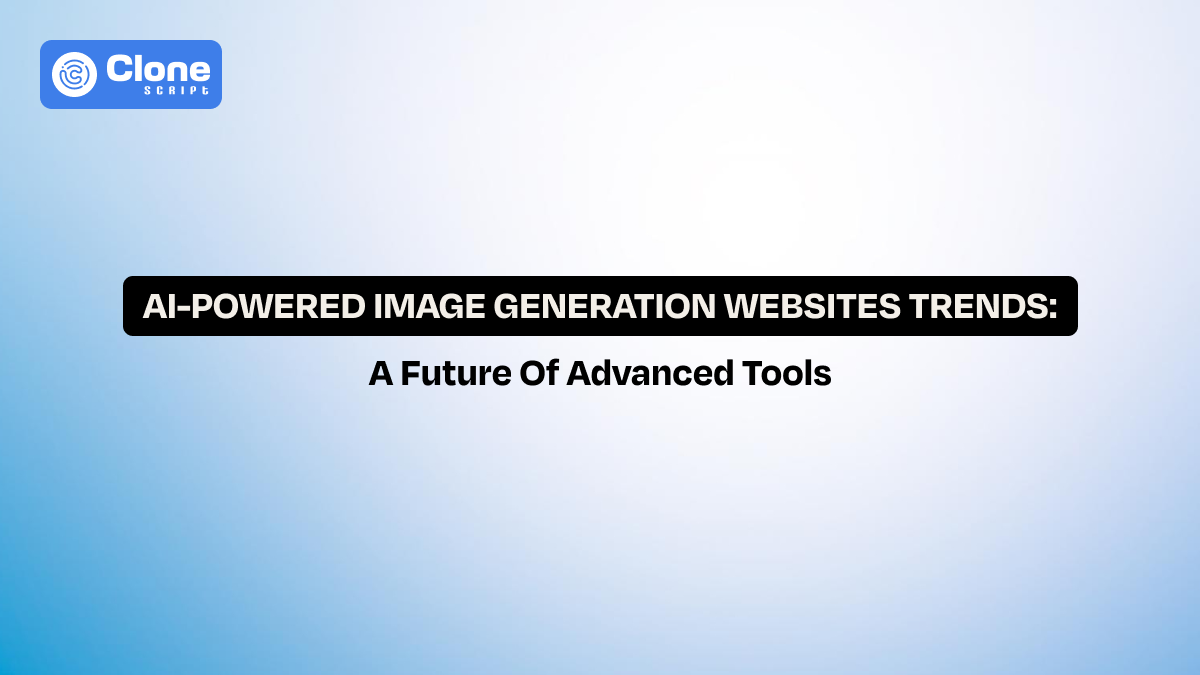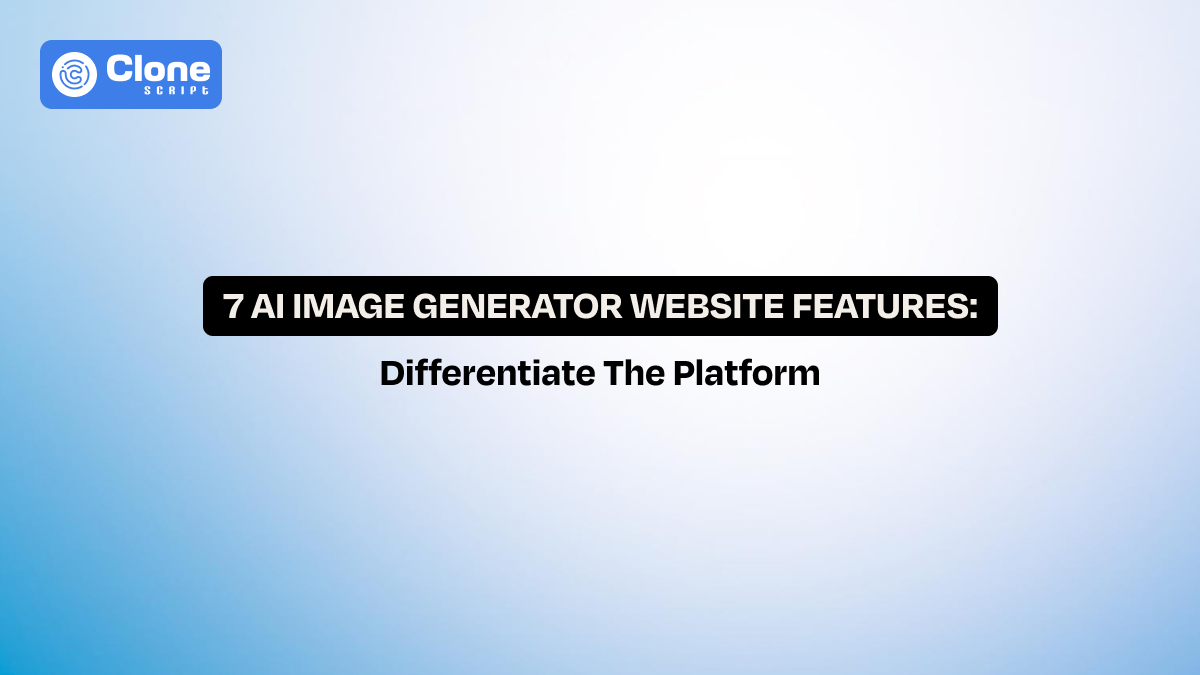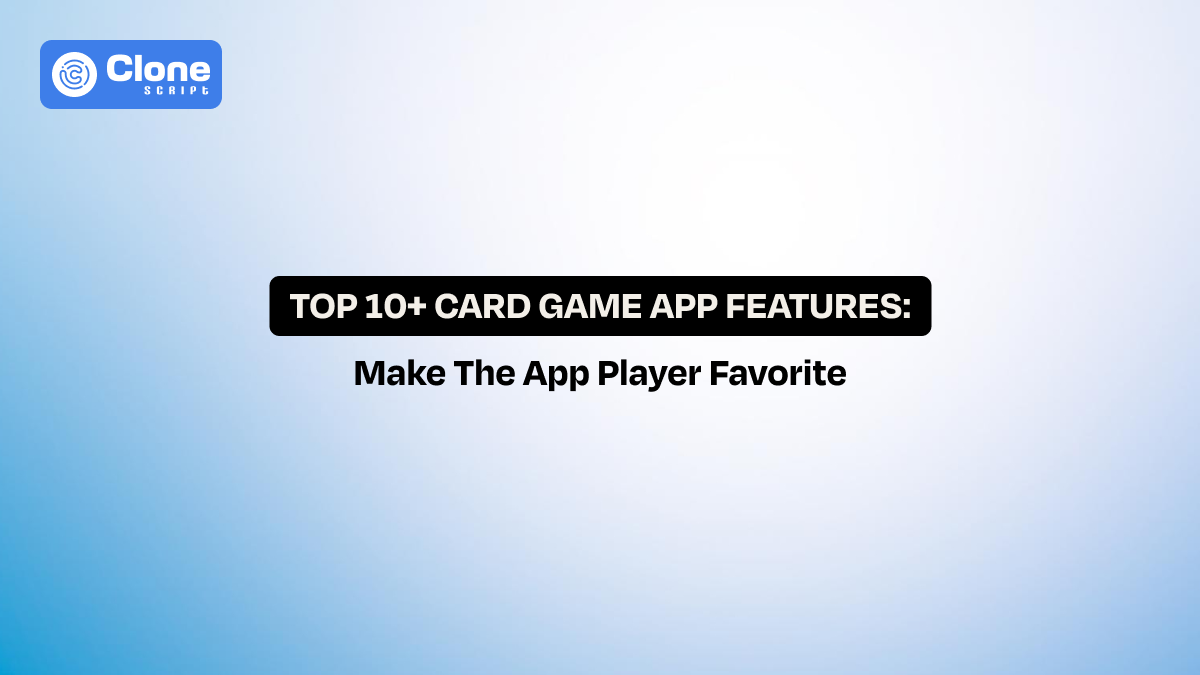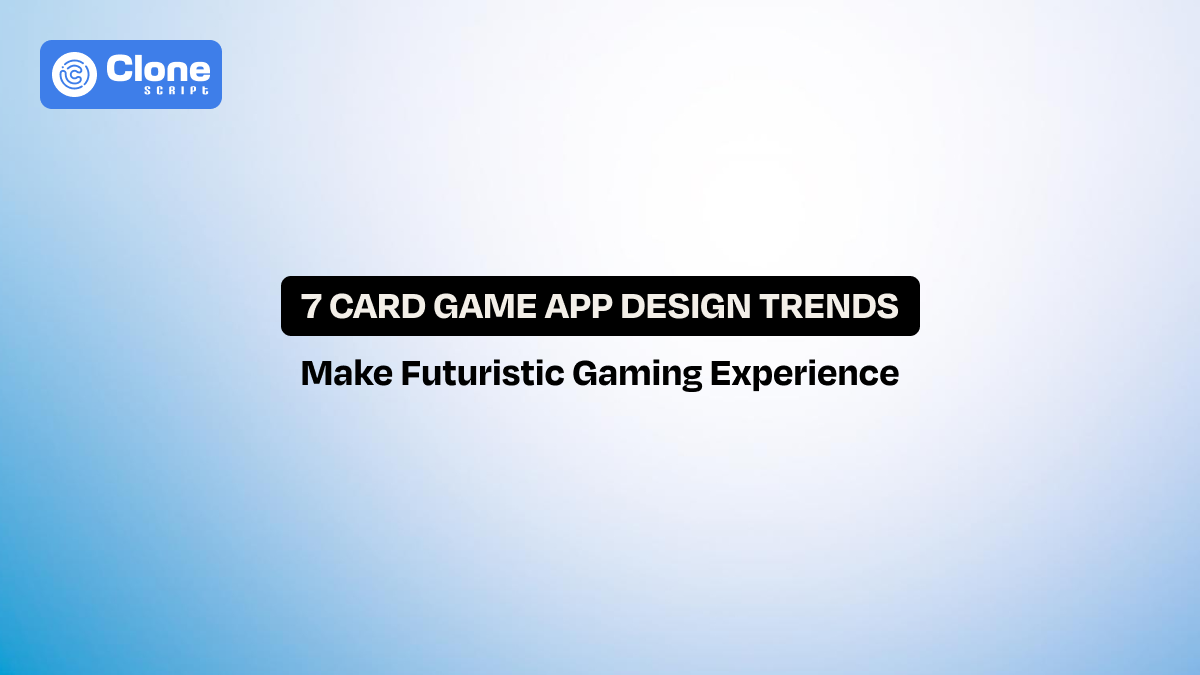What Is an AI Image Generator Website and How It Works
Artificial Intelligence has revolutionized how we create and consume digital content now. One of the most useful innovations in this space is the AI image generator website. These platforms allow users to produce unique, high-quality visuals simply by entering a few words or prompts. From designers and marketers to everyday users, these tools are quickly becoming an essential part of digital workflows.
The global AI in the image generation market is projected to reach $1.5 billion by 2030 (MarketsandMarkets), fueled by the demand for personalized, on-demand visuals. But beyond the adoption, many professionals are still curious: how does an AI image generator website work? What technologies power it, and what makes it such useful?
This blog explains everything from the fundamentals of these advanced revolutions to the technologies behind them. We’ll also discuss the future of AI image generator websites and what developers need to consider if they want to build platforms themselves.
What is an AI Image Generator Website?
An AI image generator website is an online platform that uses advanced machine learning models to create images from text, sketches, or other prompts. Unlike traditional design software, which requires manual input and editing skills, these platforms rely on artificial intelligence technology to generate visuals automatically.
In other words, it works as a bridge between natural language and visual art. Users can type prompts like “a futuristic city at sunset” or “a watercolor portrait of a cat in space”, and the AI photo generator transforms those words into images within seconds.
Key characteristics of AI image generator websites include:
-
Prompt-to-Image Transformation: Converting written descriptions into visuals. Just enter what you want, and the system generates the images in minutes.
-
Variety in Styles: From photorealistic images to abstract art and cartoons, every kind of image is available.
-
Accessibility: To use AI image generators in your mobile or on the web, there is no design expertise is required. This makes it user-friendly for everyone.
-
Scalability: Millions of images can be generated with these tools without manual design resources. It means whenever you need an image, it can be produced.
Today, platforms like DALL·E 3, MidJourney, and Stable Diffusion are among the best AI image generator websites, setting benchmarks for both quality and usability.
Why Are AI Image Generator Websites So Popular?
The surge in popularity of image generator websites is no exception. Their rise is the result of multiple overlapping trends in technology, creativity, and business needs. Here are the reasons for their growing demand:
1. Time-Saving and Cost-Effective
Traditionally, creating professional graphics or custom photos required hiring designers, photographers, or using stock libraries. This can usually take time and sometimes involves paying additionally. But in an AI image generator, you don’t have to pay too much to get professional-looking images in seconds.
2. Personalization at Scale
Every business today has become successful through personalization. AI allows brands to generate tailored visuals that match customer personas, marketing campaigns, or seasonal trends. This kind of achievement can’t be done with stock photos.
3. Democratization of Creativity
With an online image generator, even users without design skills can create stunning visuals. They have to describe what they need, and the system automatically generates the visual based on the prompt. This accessibility is a key reason behind the mass adoption of this advanced technology.
4. Integration with Digital Tools
Many AI image generator websites integrate securely with design tools, APIs, and CMS platforms. This is becoming easier for businesses to embed AI-driven visuals into their workflows. They don’t have to install third-party tools to post the generated image to the respective platforms. All of their tasks can be done under the platform.
5. Viral Content and Innovation
The unique, sometimes surreal outputs of AI image generation often go viral, adding to the buzz and fueling interest across industries—from gaming to fashion to e-commerce. The recent example is “GHIBLI” style images (on ChatGPT) and “Nano Banana” powered images (on Gemini).
Statistically, over 65% of marketers now use AI-generated visuals in some form (HubSpot 2024), proving how quickly this technology is reshaping creative processes.
How Does an AI Image Generator Work?
For most users, the process feels magical: type a sentence, and a fully formed image appears. But under the hood, the AI image generation process explained is both fascinating and complex.
In other words, the features of the AI image generator website work tirelessly to make professional-looking visuals from the context aware.
Here’s a step-by-step breakdown:
Step 1: Input Prompt.
Users begin with text descriptions, sketches, or even reference images. This input acts as the instruction set for the AI, guiding it on what kind of image to create. For example, a prompt like “a neon-lit cyberpunk city skyline at night” immediately sets a visual direction for the model.
Step 2: Natural Language Processing (NLP)
The text input is then processed through NLP algorithms. These systems break down language into structured elements that the AI can understand. In our example, terms like “cyberpunk,” “city,” and “night” are identified as separate visual concepts. Advanced NLP validates that the AI not only understands individual words but also contextual relationships (e.g., a “neon-lit” city looks different from a “sunlit” one).
Step 3: Model Interpretation
Next, the AI taps into its trained models—often diffusion models or GANs (Generative Adversarial Networks). These models have been trained on millions of images paired with descriptive text. The AI interprets the prompt by mapping the words to visual features like colors, shapes, and textures. In other words, it figures out how the concepts should look together in a single frame.
Step 4: Image Generation
The actual creation begins. In diffusion models (like Stable Diffusion), the process starts with random noise, and the system gradually refines it into a coherent image through multiple iterations. Each refinement step brings the result closer to the description provided. For GANs, the generator creates an image, while the discriminator evaluates whether it looks realistic—together, they push the output to improve.
Step 5: Output Optimization
Once the base image is generated, post-processing techniques kick in. These include upscaling resolution, correcting distortions, and fine-tuning details such as lighting and textures. This checks that the final result aligns closely with the original input prompt and is ready for practical use.
Real-World Example: DALL·E 3 by OpenAI
A perfect example is DALL·E 3, one of the most popular AI photo generators today. If a user enters “an astronaut riding a horse in a photorealistic style”, DALL·E 3 uses its NLP pipeline to understand “astronaut,” “horse,” and “photorealistic style.” Then, its diffusion model generates a high-quality image of exactly that scenario, often with variations to give users multiple creative options.
This process highlights how AI image generator websites translate words into pixels. They do not work through shortcuts, but by relying on massive training datasets, machine learning algorithms, and continuous refinement.
The Core Technologies Behind AI Image Generators
Understanding the underlying technologies is essential for anyone aiming to create their own AI image generator website. Let’s break down the building blocks:
1. Generative Adversarial Networks (GANs)
GANs were among the earliest breakthroughs in AI image generation. A GAN consists of two neural networks working in tandem:
-
Generator: Produces new images from scratch.
-
Discriminator: Evaluates whether the image looks real or fake compared to training data.
Through repeated competition, the generator improves until the images are highly realistic. GANs were the foundation of early AI photo generators, powering tools like This Person Does Not Exist, which creates lifelike portraits of people who don’t exist in reality.
While GANs produce impressive results, they struggle with fine detail and text-based prompts, which is why newer models have evolved.
2. Diffusion Models
Currently, diffusion models are the most widely used in leading AI image generator websites. Tools like Stable Diffusion and DALL·E 3 rely heavily on this architecture.
The process begins with random noise and gradually “denoises” the image through multiple steps, guided by the input prompt. Each iteration refines the image until it matches the description. Diffusion models are considered more stable and capable of handling complex prompts compared to GANs.
For example, when asked to generate “a watercolor painting of a robot reading a book under a tree”, diffusion models can combine abstract styles, textures, and scene composition far more effectively than older technologies.
3. Natural Language Processing (NLP)
For an AI image generator website to produce relevant results, it must first understand human language. This is where NLP models come into play.
NLP translates user input into structured data that the visual model can use. Large language models like GPT or transformer-based NLP models parse context, adjectives, and style requests. For instance, the difference between “a lion in a jungle” and “a cartoon lion in a jungle” is a minimal difference but significant, and NLP validates that the image generator captures that nuance.
4. Training Datasets
Behind every impressive AI photo generator is a massive dataset of work. These datasets consist of millions of labeled images paired with textual descriptions. The broader and higher-quality the dataset, the better the generator performs.
-
Datasets like LAION-5B (used for Stable Diffusion) contain billions of image-text pairs scraped from the internet. These datasets enable AI to learn not just objects and scenes but also artistic styles, textures, and cultural references.
However, dataset quality also brings ethical questions—such as copyright use and representation bias—that developers must consider when training or deploying models.
5. APIs and Cloud Infrastructure
To ensure speed and scalability, most online image generators run on cloud platforms with GPU acceleration. Training a single large diffusion model can require thousands of GPU hours, which is why companies leverage platforms like AWS, Google Cloud, or Azure.
APIs also play a crucial role. For instance, OpenAI’s DALL·E API allows developers to embed text-to-image capabilities into apps, websites, or e-commerce platforms without building models from scratch. Similarly, Stability AI provides an API for Stable Diffusion, allowing quick integration with custom projects.
6. User Interface and Templates
While backend models power the AI, the user interface (UI) design is what makes the system accessible. Many platforms use a ready-made template that includes:
-
Prompt input boxes for user queries.
-
Style or filter selectors (e.g., photorealistic, anime, 3D render).
-
Options for adjusting resolution or aspect ratios.
-
Download and share buttons for easy use.
For example, Canva’s AI image generator integrates seamlessly with its existing design platform, allowing users to type prompts and immediately embed results into their projects. Templates help non-technical users interact with advanced AI systems intuitively.
Final Note on the Tech Stack
Bringing these technologies together—GANs, diffusion models, NLP, large datasets, APIs, and user-friendly templates—forms the stage of the AI image generation process. For developers aiming to build an AI image generator website, understanding these layers is critical for creating platforms that are both powerful and user-friendly.
Do you want to develop an AI image-making platform?
A website development for AI-image generation involves various tasks from UI and UX design to backend system integration and GAN setup. The most important part of the development cycle is frontend development. After all, users interact with the website's impressive design and features, not backend code.
The HTML5 and advanced SCSS template is very helpful for you to initiate the platform’s client-side setup without heavily investing thousands of dollars in hiring frontend developers. As the template is optimized for a better appearance, speed, load, and readable code, keep the standards high.
Want to see what the template looks like?
Here, presenting you “Dreamify, a Frontend-Ready Website Template for an AI Image Creation Platform.”

It's not just enough to buy this AI image creation website template. To make it live on the web and helpful for users, you have to complete the tasks:
-
Customizing the design and layouts
-
Modifying the content for better recognition
-
Integration of backend systems
-
Implementing GPT models, including GANs, NLP, API, and Cloud Data Structures
Once everything is done, the QA & Testing is important before the launch. After the satisfactory result in terms of user experience, security, and advanced features, you can keep the platform live on the web.
Conclusion
AI image generator websites have turned what once felt impossible into an everyday reality. From quick marketing visuals to game assets and product designs, these tools make creating images faster, smarter, and more accessible than ever. Powered by advanced models like GANs and diffusion, they’re becoming more realistic, more customizable, and easier to use.
For developers and businesses, this isn’t just a passing trend. Building or adopting an AI image generator website today means getting ready for a future where creativity and technology work hand in hand to deliver endless possibilities.
FAQs
-
Do AI image generators work on mobile and web?
Yes, most AI image generator websites are accessible via mobile browsers or web platforms, providing intuitive interfaces for prompt input, style selection, and instant image downloads.
-
What technologies power AI image generator websites?
Core technologies include GANs, diffusion models, NLP, large labeled image datasets, GPU-based cloud infrastructure, APIs, and frontend templates for intuitive user interaction.
-
Which AI image generator website is the best?
Top platforms include DALL·E 3, MidJourney, and Stable Diffusion, recognized for photorealistic quality, style variety, user-friendly interfaces, and fast AI-driven image generation capabilities.
-
How can AI image generators improve digital marketing?
They provide personalized visuals, speed up content creation, support multiple styles, enhance social media engagement, and allow brands to produce on-demand, attention-grabbing images efficiently.
-
Are AI-generated images free to use commercially?
Usage rights vary by platform and dataset. Some AI images are free for commercial use, while others require attribution or licenses; always check the website’s terms.
-
What are the benefits of using AI image generators?
AI image generators save time, reduce design costs, offer customizable visuals, support multiple styles, and enable anyone to create professional-looking images without specialized design skills.
-
Do AI image generators work on mobile and web?
Yes, most AI image generator websites are accessible via mobile browsers or web platforms, providing intuitive interfaces for prompt input, style selection, and instant image downloads.
 BTC - Bitcoin
BTC - Bitcoin
 USDTERC20 - USDT ERC20
USDTERC20 - USDT ERC20
 ETH - Ethereum
ETH - Ethereum
 BNB - Binance
BNB - Binance
 BCH - Bitcoin Cash
BCH - Bitcoin Cash
 DOGE - Dogecoin
DOGE - Dogecoin
 TRX - TRON
TRX - TRON
 USDTTRC20 - USD TRC20
USDTTRC20 - USD TRC20
 LTC - LiteCoin
LTC - LiteCoin

